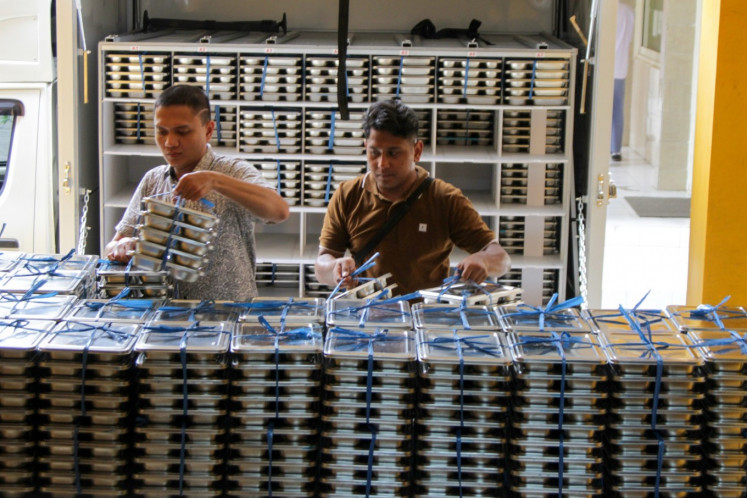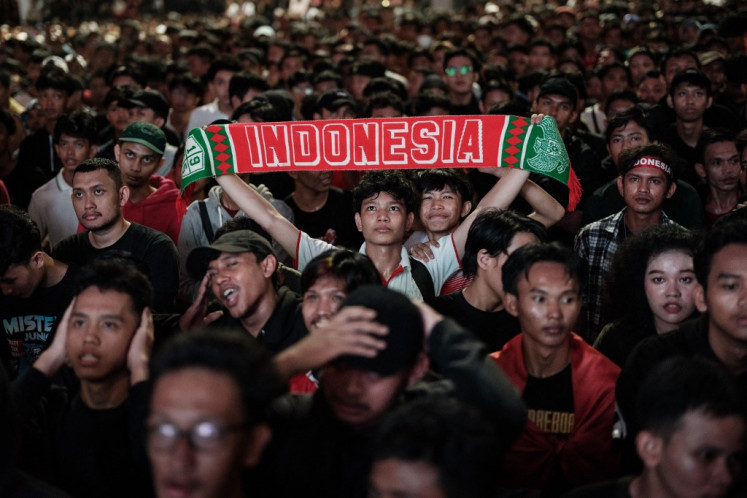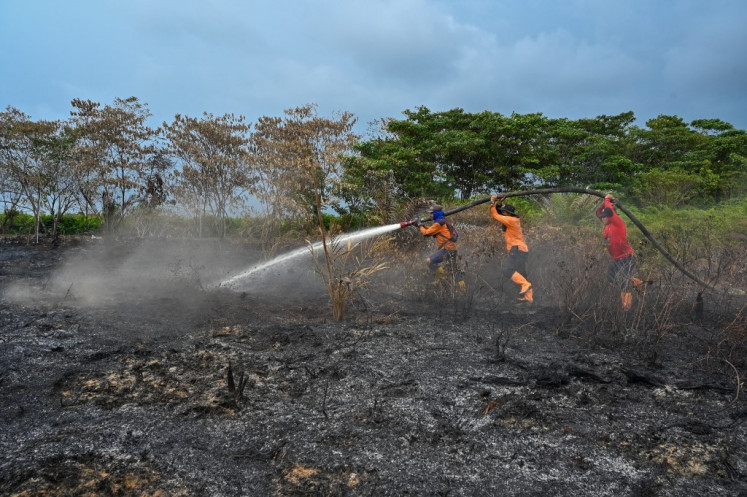Low-income patients praise RSCM Salemba
Drowsiness canât wait: Relatives of patients mill around an alleyway leading to the emergency unit of Cipto Mangunkusumo Hospital in Jakarta on Thursday
Change text size
Gift Premium Articles
to Anyone
 Drowsiness canât wait: Relatives of patients mill around an alleyway leading to the emergency unit of Cipto Mangunkusumo Hospital in Jakarta on Thursday. The referral hospital is improving facilities to accommodate the ever increasing number of patients. (JP/Indah Setyawati) (JP/Indah Setyawati)
Drowsiness canât wait: Relatives of patients mill around an alleyway leading to the emergency unit of Cipto Mangunkusumo Hospital in Jakarta on Thursday. The referral hospital is improving facilities to accommodate the ever increasing number of patients. (JP/Indah Setyawati) (JP/Indah Setyawati)
D
span class="caption" style="width: 510px;">Drowsiness can't wait: Relatives of patients mill around an alleyway leading to the emergency unit of Cipto Mangunkusumo Hospital in Jakarta on Thursday. The referral hospital is improving facilities to accommodate the ever increasing number of patients. (JP/Indah Setyawati)
Old, spooky and steamy might have been previous impressions of Cipto Mangungkusumo Hospital (RSCM) in Salemba, Central Jakarta, but nowadays, the biggest state hospital in the country has repaired its image through renovation and offering a better service for low-income patients.
The new emergency unit, for example, was renovated in 2010 after being in use for 24 years. Farida, 39, a resident of Jagakarsa in South Jakarta, said she was startled to see the emergency unit when she visited it recently.
'It was modern and cool, very different from the ugly building I visited back in 1994,' she told The Jakarta Post on Thursday.
The spacious registration room and the smaller, insured patients service unit have been air-conditioned, brightened up and equipped with dozens of service desks for patients either from the city or other provinces.
The application of the Kartu Jakarta Sehat (KJS) healthcare program in Jakarta has forced hospitals in the capital to maximize their services as they see increasing numbers of patients.
RSCM director C.H. Soejono said the hospital served 3,100 patients daily since the program began last year. The hospital saw 30 to 40 percent of patients stuck in the emergency unit because there were no more rooms left.
'Some 80 percent of rooms in the third class of room are always occupied,' he said.
Despite limited rooms and long queues caused by an abundance of patients, families of patients treated at the hospital praised its attentive doctors, who they said played an active role in facilitating patients from remote regions.
Tutik, a resident of Bogor, said her sister used a regional healthcare program to undergo tumor surgery in the hospital. One of the doctors, she said, was very attentive as he regularly called her to ensure her sister had arrived at the hospital in time for surgery.
'The doctor even prepared the room. The six bed room is air conditioned and the bathroom has a shower,' she told the Post on Wednesday.
Adam Kholid, a father of a 10-year-old patient of thalassemia, appreciated the availability of the special unit in the hospital.
He said his son, Mohamad Farhan, was previously treated in a regional general hospital (RSUD) in his hometown in Kuningan, West Java, until he was referred to this hospital two years ago. The mosque caretaker said the hospital in his hometown did not have a special unit that could deal with the rare disease.
'Here, Farhan can see other children having blood transfusions, so he feels comfortable. I can also share stories with other parents. A professor here also likes to spend time to give us more information about thalassemia,' he said.
The thalassemia treatment unit had no special room for child patients despite the presence of dozens of children waiting for hours for their turn to have blood transfusions. Adam said he regretted the unit did not provide a special section for thalassemia patients and their families to spend the night.
'People come from various cities. Every time we come here, the queue is always long. Sometimes it takes two days for a medical examination and blood transfusion. These kids must be tired,' he said.
RSCM, located in the Salemba subdistrict, is closely related to the medical faculty of the University of Indonesia (UI). It started back in 1896 when H. Roll was appointed the head of medical education in Batavia, leading the laboratory and Dokter Jawa (Java Doctor) school.
In 1910, the school was changed into Stovia, which later became the medical faculty of UI. During the Japanese occupation in 1942, it was turned into a hospital university. Three years later the name was changed to Rumah Sakit Oemoem Negeri. In 1950, the hospital's name became Rumah Sakit Umum Pusat.
The name officially became RSUP Nasional Dr. Cipto Mangunkusumo in 1994.
With the establishment of RSCM Kencana in 2010, the hospital extended its services to reach those looking for medical treatment abroad. The private wing, which was recently used to perform a surgical procedure on Airlangga Satriadhi Yudhoyono, the grandson of President Susilo Bambang Yudhoyono, is another face of the hospital serving wealthy patients wanting better services.









